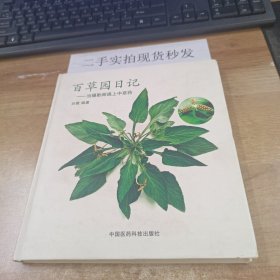
当当正版 外国摄影师镜头中的中国 郑梓煜 编著 9787508546087 五洲传播出版社
新华书店直发 全新正版 急速发货 开票联系客服
¥ 195.04 5.3折 ¥ 368 全新
库存4件
作者郑梓煜 编著
出版社五洲传播出版社
ISBN9787508546087
出版时间2021-08
装帧精装
开本其他
定价368元
货号29309455
上书时间2024-10-19
- 在售商品 暂无
- 平均发货时间 18小时
- 好评率 暂无
- 最新上架
商品详情
- 品相描述:全新
- 商品描述
-
前言
.
Let “Seeing” Be Seen Again
Through more than 12 months of painstaking endeavor, Zheng Ziyu and his team searched through more than a million historical photos about China, as well as archival images taken by many Western missionaries, photographers, and scholars who came to China with various purposes and took pictures from 1844 to 2019. They focused on photos that have been taken during the past 70 years, that is, taken since the founding of the People’s Republic of China in 1949. They chose the most representative masterpieces and compiled this photo album, hoping to present a photographic history of China and demonstrate the striking changes of China over the past more than half a century. After all, China’s development may be one of the most significant milestones in world history over the past century.
In most times, coincidences in history are just so remarkable. Photography emerged in 1839, and the next year 1840 marked the beginning of China’s modern history. In 1840, Great Powers from the west, with their powerful warships, forced this ancient country to open its door. The sufferings, setbacks, humiliations, and failures that have haunted Chinese people since have been recorded and remembered. After generations of painstaking endeavor, China embraced a turning pointing in 1949, which laid the historical foundation for the remarkable achievements that the country had made today.
The invention of photography is a milestone for human visual development whose significance can never be overstated. It divided human visual development into two phases: the “pre-photography phase” before the emergence of photography and the “photographic phase” that followed. Before the invention of photography, all human-made visual works, ranging from unparalleled artistic masterpieces to common utensils in daily life, were manually crafted according to different traditions for various purposes. They manifested different aesthetic tastes of different eras. However, the emergence of photography changed the tradition. For the first time, humanity had a tool to produce and replicate images effectively. More importantly, photography provides the possibility for “on-spot observation”—not only through naked eyes but also through photos which externalize instant pictures left on the retina and relevant brain regions and convert them into permanent physical existences. That means that without photography, “seeing is believing” would be only a hypothesis, conjecture and experience. In this sense, it is doubtless that photography is observation, and observation is photography.
Of course, after a plethora of photographic practices over the past century, people today have a deeper understanding of photography as a tool of visualization. We realized that photographic observation still is not just mechanical copying of objects in reality, but a perspective depended on personal choices. That is to say, the so-called “documentary” that was attached to photography is merely an inaccurate definition by “pre-photography” phase, and cannot represent the whole of photography. Obviously, the history reconstructed through photography has a dual nature: on the one hand, photography is the observation on the spot; on the other hand, photography is a selected observation. One direct result of the duality of photography is that we can see both “Other” and “On the Spot” in the same photo. If we compare two photos of the same place taken in different historical periods, we would even sense the evolution: due to different times and different photographers, viewers may find the “Other” on the spot shifts to the “Self” on the spot, and their purpose shifts from “seeking novelty” to “observing rationally,” thus defining the historical value of observation.
In a nutshell, photography enables us to see transient moments that happen by accident, the existences that we used to ignore, and events that have a long history. For this reason, we have an image of China witnessed by others and comprised of countless slices of history. All of these “slices” are gathered in the book, which lets “seeing” be seen again. In this way, observation turns into the classic, subject and history.
导语摘要画册通过国外摄影师的镜头展现了中国从封闭走向开放,从落后走向强大,从单一文化和单一价值观转变为兼容并蓄、百花齐放的文化气氛。中国的每个阶段都有大量的见证者,这些外国摄影师用照片和影片将中国一点一滴的改变记录下来,我们国家的很多生活场景在他们看来都有着独特的价值和有着独一无二的拍摄理由,我们国家的很多社会现象都堪称“标本”,是一个社会快速发展的已经阶段。经由他们的充满幽默感和善意的作品,我们也可以从侧面回望我们自己的脚步。
商品简介画册通过国外摄影师的镜头展现了中国从封闭走向开放,从落后走向强大,从单一文化和单一价值观转变为兼容并蓄、百花齐放的文化气氛。中国的每个阶段都有大量的见证者,这些外国摄影师用照片和影片将中国一点一滴的改变记录下来,我们国家的很多生活场景在他们看来都有着独特的价值和有着独一无二的拍摄理由,我们国家的很多社会现象都堪称“标本”,是一个社会快速发展的已经阶段。经由他们的充满幽默感和善意的作品,我们也可以从侧面回望我们自己的脚步。
作者简介画册主编郑梓煜1985生人, 现工作生活于广州。中山大学传播与设计学院副研究员,博士;极光视觉联合创始人。曾任南方都市报视觉中心高级编辑、视觉周刊策划统筹编辑,财新传媒视觉顾问。现从事视觉传播研究、当代摄影研究及策展、艺术批评写作。
目录How Are We Seen by Outlanders (by Zheng Ziyu)
A Mysterious Nation through Curious Eyes 1949—1978
Signs of Change through Keen Eyes 1978—1992
Reform Process through the Eyes of Witnesses 1992—2008
An Era of Rapid Development through Attentive Eyes 2008—2019
Postscript
Credits
内容摘要画册通过国外摄影师的镜头展现了中国从封闭走向开放,从落后走向强大,从单一文化和单一价值观转变为兼容并蓄、百花齐放的文化气氛。中国的每个阶段都有大量的见证者,这些外国摄影师用照片和影片将中国一点一滴的改变记录下来,我们国家的很多生活场景在他们看来都有着独特的价值和有着独一无二的拍摄理由,我们国家的很多社会现象都堪称“标本”,是一个社会快速发展的已经阶段。经由他们的充满幽默感和善意的作品,我们也可以从侧面回望我们自己的脚步。
主编推荐画册主编郑梓煜1985生人, 现工作生活于广州。中山大学传播与设计学院副研究员,博士;极光视觉联合创始人。曾任南方都市报视觉中心高级编辑、视觉周刊策划统筹编辑,财新传媒视觉顾问。现从事视觉传播研究、当代摄影研究及策展、艺术批评写作。
相关推荐
— 没有更多了 —



























以下为对购买帮助不大的评价